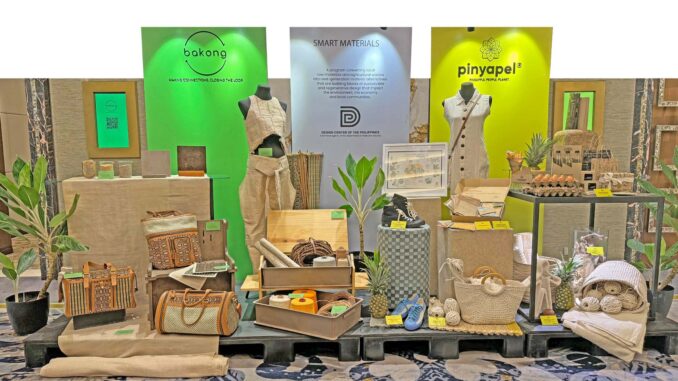
The Design Center of the Philippines is pushing the boundaries of innovation and sustainability, elevating the competitiveness of Philippine products on a global stage.
It is working on the potential of bakong, an aquatic ornamental plant found to have extraordinary characteristics to transform local resources into globally-recognized designs.
“The ambition of bakong is much bigger. We know it’s not gonna happen overnight. The government has the responsibility to derisk it for industries to invest, to lessen the gap, and to make it a more viable route to take. This is just the start of the journey,” said Design Center executive director Rhea Matute, explaining the multifaceted vision behind the bakong project.
The goal is not just immediate success, but also long-term sustainability, which requires a collaborative effort between the government and industries.
Matute said circularity, the principle of keeping materials in use for as long as possible, is fundamental to the bakong project.
“For circularity to happen it needs a lot of collaborators because it needs to scale. What was important for the Design Center is to bring in partners that has industrialization as its strength,” she said.
When processed into twines or sheets, bakong unlocks a world of possibilities, transforming how one approaches fashion, furniture and sustainable design. Its integration with wood allows for the creation of innovative furniture, while bakong twines offer exciting new options for wearable textiles. Partner designers continually explore the material’s potential to test its limits, and discover its strengths.
Breaking new ground
Design Center researcher Mikay Quiñones recalled the fascinating origin of the bakong project.

“In 2013, the locals of Santa Teresita, Cagayan, noticed the abundance of bakong thriving in Laguna de Cagayan covering roughly 50 percent of its surface. Driven by curiosity, they sought ways to harness its potential. They reached out first to the Department of Trade and Industry (DTI) in Cagayan, and then they were routed to Design center,” she said.
In 2022, the bakong project broadened its focus, exploring the possibilities of biocomposites and fabric in collaboration with the Philippine Textile Research Institute (PTRI).
Biocomposites, a combination of natural fibers and plastic, hold great promise for the furniture industry, particularly with bakong as a sustainable raw material. In addition, bakong can be processed into paper, opening up even more applications across various sectors.
Shared responsibility

Transcending functionality, the bakong project creates a broader conversation about circular design and shared responsibility towards society and the environment.
The project has supported a local handicrafts industry, the Laguna de Cagayan Handicraft Association, but its potential remains largely untapped.
“The group, which has the support of the local government plays a vital role in processing bakong based on demand. They harvest only when needed. This ensures the long-term viability of the bakong as a prime resource,” Quiñones said.
Concept to product
The bakong project extends its reach beyond material innovation. It aims to revitalize the community in Sta. Teresita, whose story serves as an inspiration. Bakong, with its diverse applications, embodies the potential of circularity and reminds us that each of us has a role to play in shaping a sustainable future.

The Design Center collaborates with over 30 partners, including MSMEs and independent designers, to unleash the creative potential of bakong.
It has forged lasting engagements with brands like A Garcia, Balay Kamay, Bayo, Nature’s Legacy, Pocket Garden, and Rags to Riches, who are integrating Bakong into their product designs.
Bioplastics manufacturer D&L Industries, ecolumber maker Envirotech and plastic producer Sentinel have also worked with the bakong project and formed partnerships with talented individuals like Tito dela Peña from the UP College of Fine Arts and industrial designer Stanley Ruiz.
While bakong is found in other Southeast Asian countries and Australia, the Philippines stands out as the first to utilize it beyond ornamental purposes.
The bakong project is actively exploring the availability of bakong in other regions of the Philippines. Designers see its potential for scaling up its utilization due to its versatility.


Be the first to comment